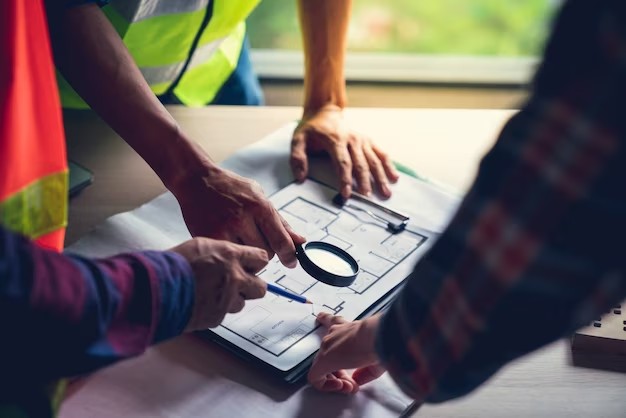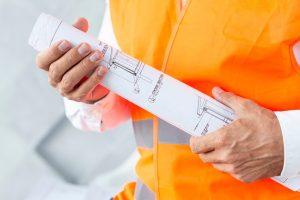Introduction to Visual Inspection Prior To Any Testing
- December 20, 2023
- Posted by: Velosi Author
- Categories: Civil, Insights

Visual inspection involves the process of examining certain areas and materials with the naked eye by the experts.
What is Visual Inspection in NDT?
Non-Destructive Testing (NDT), as the name suggests, is a testing method to determine the properties and composition of a particular surface area. It includes proper inspection of materials and components, in that certain area without damaging or modifying them before making any construction plans. Visual Inspection directs observation, helps in identifying defects and faults in the specific place which later can be fixed before starting the main construction work. In addition to this, by visual inspection, an engineer decides and marks the area for performing NDT.
Moreover, multiple tools like magnifying glasses, borescopes, and cameras are used to inspect the quality and properties of the requisite material of elements (such as soil, rock, water, and structural members) on site. Ultrasounds and Eddy current tests are also conducted to figure out the surface composition. This gives the experts a quick review of the surface area and how things can be built around it.
Why is It Important in Any Industry?
- Safety Assurance:
One of the biggest advantages of running a visual inspection is to enhance the safety of any construction plan. If there is any default in the working site, it can easily be identified. As a result, Visual inspection keeps the process safe and enhances work efficiency.
- Quality Control:
Engineers conduct visual inspections to choose the best tools and equipment for each working site depending on the circumstances. This saves resources and ensures the work follows the plan.
- Cost-Effectiveness
If you are looking for a cost-effective way to determine the condition of your construction site, well, there is no other option better than this Visual inspection. It includes cameras and drones. The engineer will recommend the most suitable testing method, considering your budget as well.
- Risk Detection:
Once the properties of a surface are determined, there must be perfect planning to tackle all the upcoming risks. Visual inspection works with accuracy in determining future problems depending on the condition of the area. Through this, experts built high-class buildings that can easily tackle potential natural problems.
Applications of Visual Inspection in NDT:
In terms of the applications of visual inspection, the list is quite lengthy. This visual observation method plays an important role in different fields like construction, petroleum, automotive, and other manufacturing industries. Let us have a quick overview of the applications of visual inspection.
| Applications | Specification |
| Welding Inspection | Detecting cracks, porosity, or incomplete fusion in welds for structural reliability and adherence to standards. |
| Structural Examination | Evaluating buildings, bridges, & and pipelines for corrosion, fatigue, or damage, is crucial for safety and maintenance. |
| Component Inspection | Checking machinery, & parts for defects or wear, ensuring functionality and reliability in various applications. |
| Quality Control | Verifying surface finish, dimensions, & assembly in manufacturing for consistent product quality and compliance. |
| Maintenance Checks | Monitoring equipment for wear, & corrosion, ensuring safety, and preventing breakdowns in operational environments. |
| Safety Assessments | Identifying industrial hazards, promoting proactive measures for worker safety, & accident prevention. |
5 Steps Within the Visual Inspection Methodology
- Firstly, it is important to have detailed information regarding the construction tools, machinery, vehicles, and workers before starting a project.
- Experts must be sent to visually inspect the construction site and to determine the benefits and disadvantages of building monuments at that specific place.
- Further, technological and manual tricks are implemented to determine as many defaults as possible in that area.
- You should determine whether you have enough resources to deal with these defects and their risks.
- Ultimately, you will have to decide whether the place can be used for building structures or if it’s not suitable.

Benefits of Visual Inspection:
- Easy and cost-effective testing method, as it doesn’t include the use of heavy machinery and expensive tools to indicate the main issue.
- It doesn’t require long preparations. Experts take only minutes to use a drone and figure out the condition of the working site with the naked eye.
- Everything is planned after a visualized testing program, so there is no waste of resources or money.
- Visual inspection doesn’t depend on the surface type and conditions. It can be performed on all types of areas which can be used for building roads or bridges.
- Using this as an initial step for making construction plans can support in terms of a perfect launch for making premium working sites.
Visual Inspection is Required:
- To identify major and minor structural failures.
- To mark and identify locations for further testing.
- To locate spalling, cracks, deterioration, seepage effects, and other structural defects.
- To identify structural defects causes and their onward solutions.
- To recognize the existing structural system of a building.
- To examine the critical loading on the structure.
- To investigate the impact of any alterations and additions on building structure.
Please contact us for more information and assistance.



